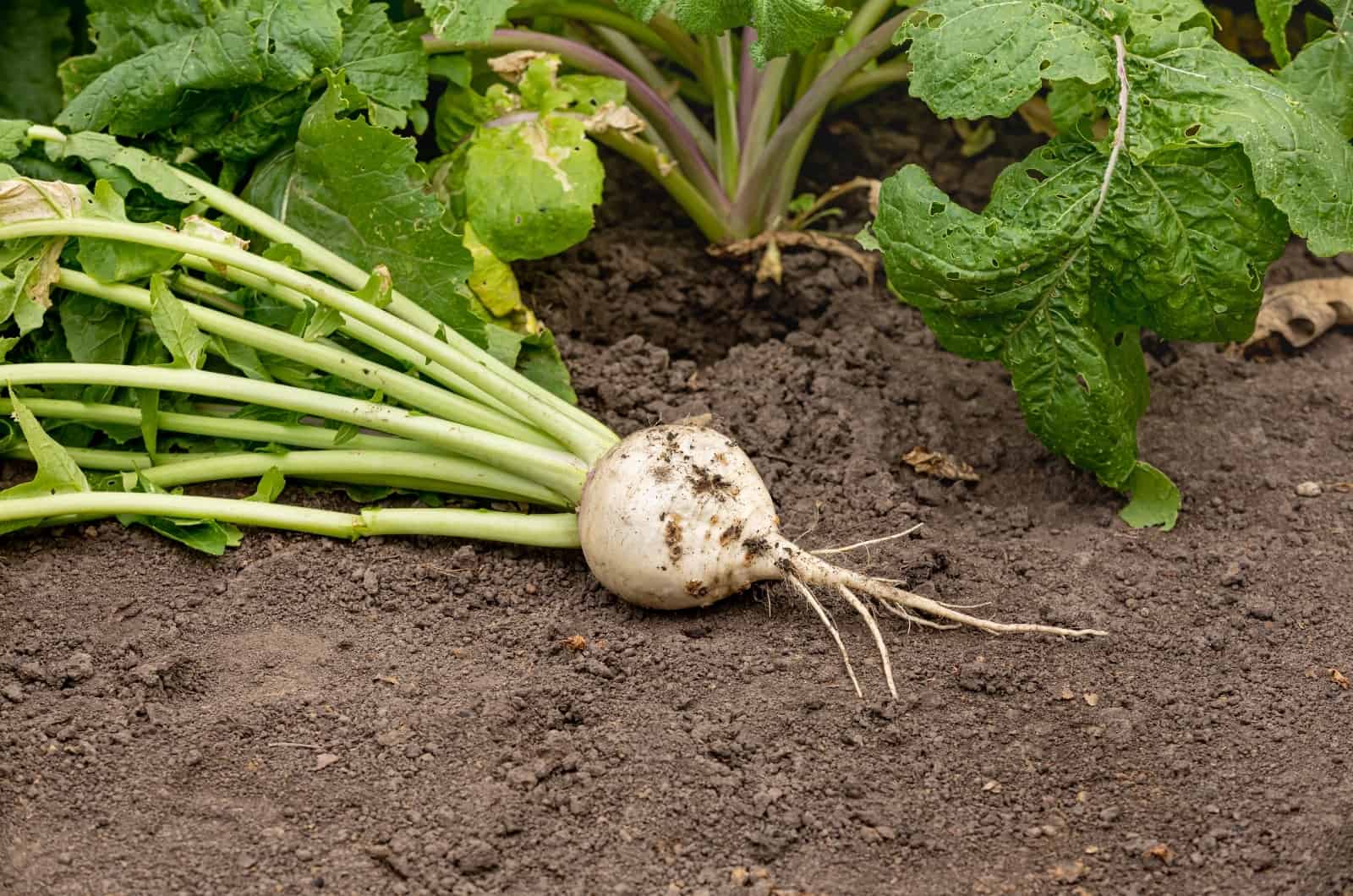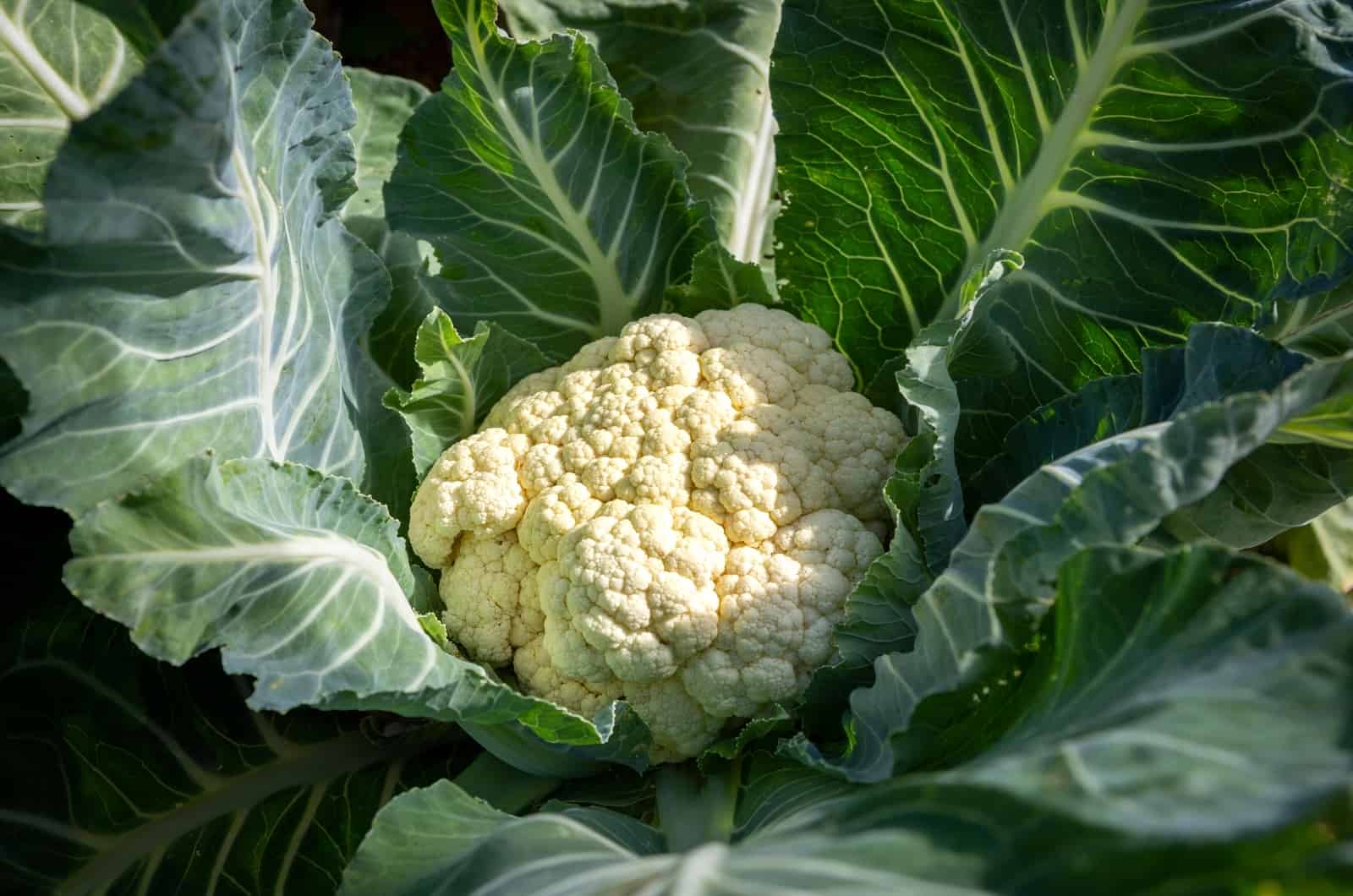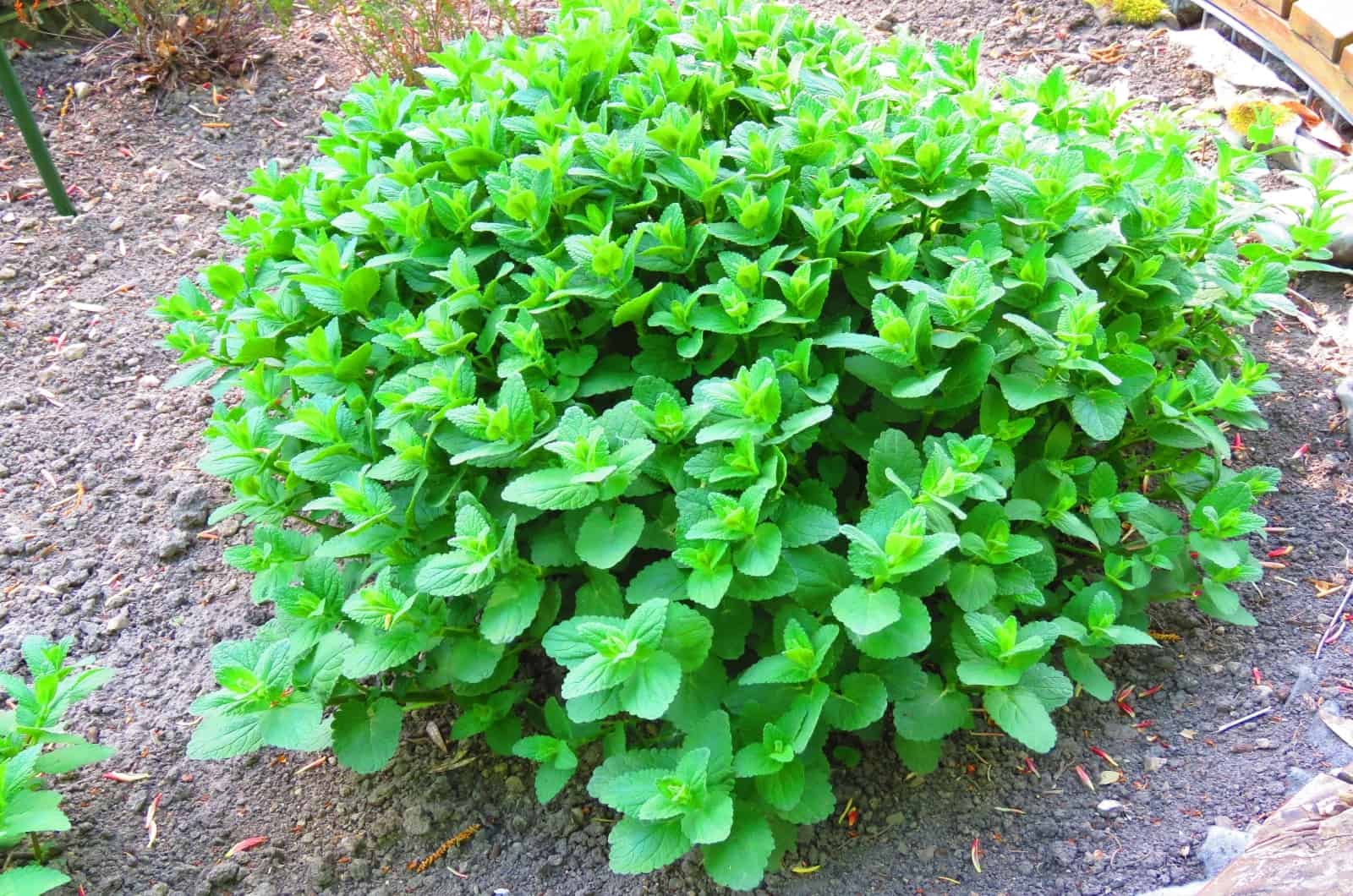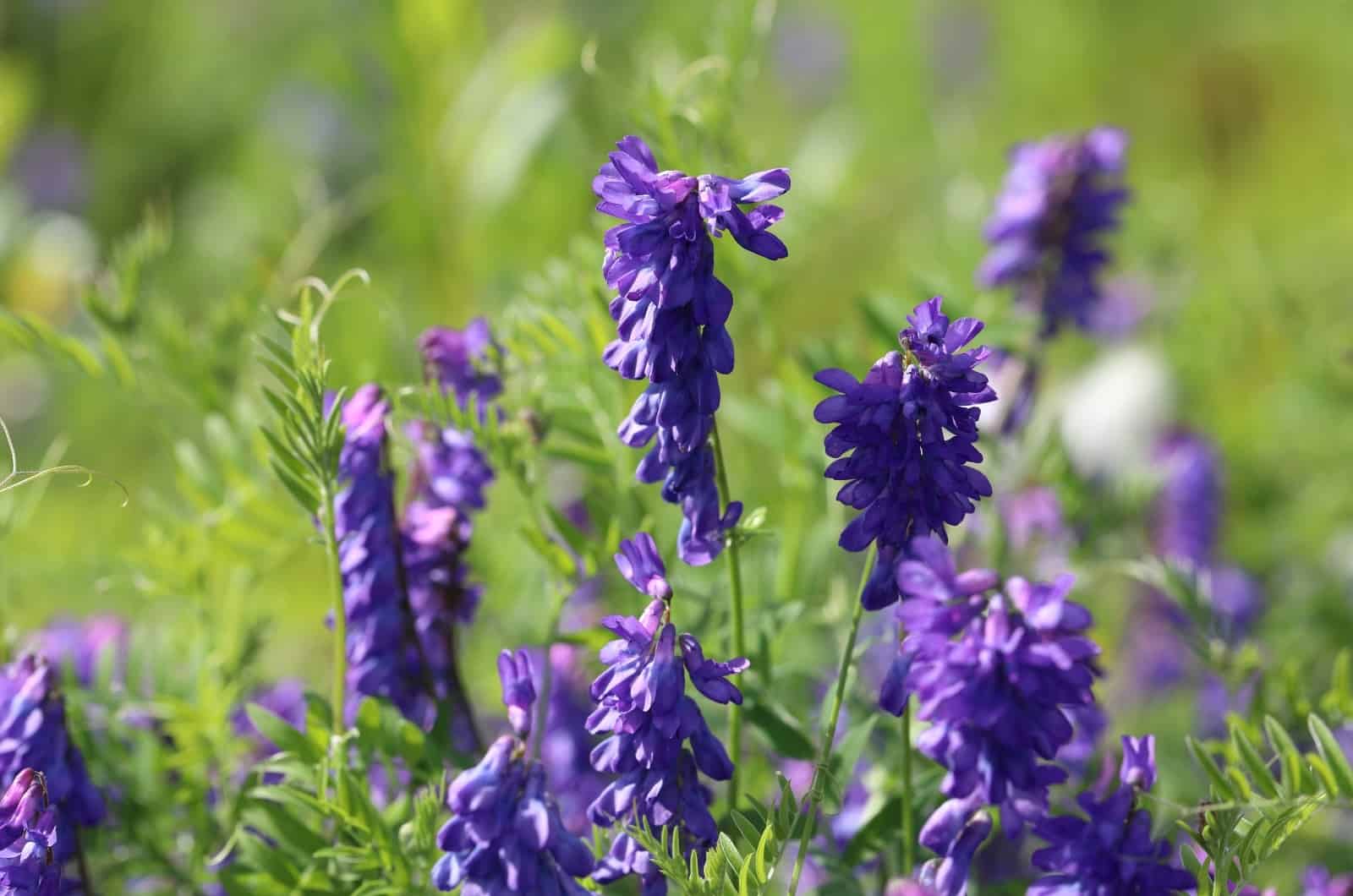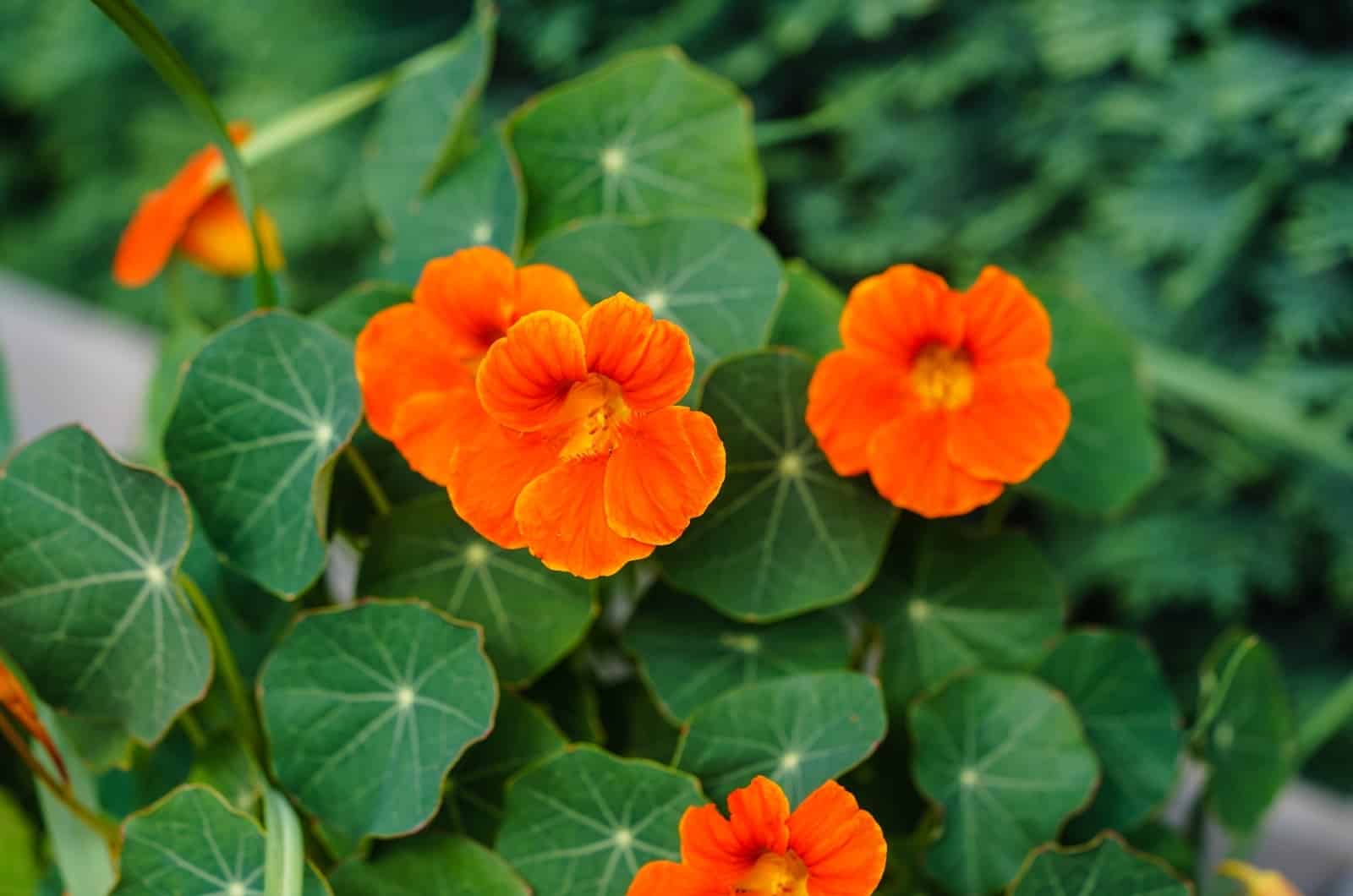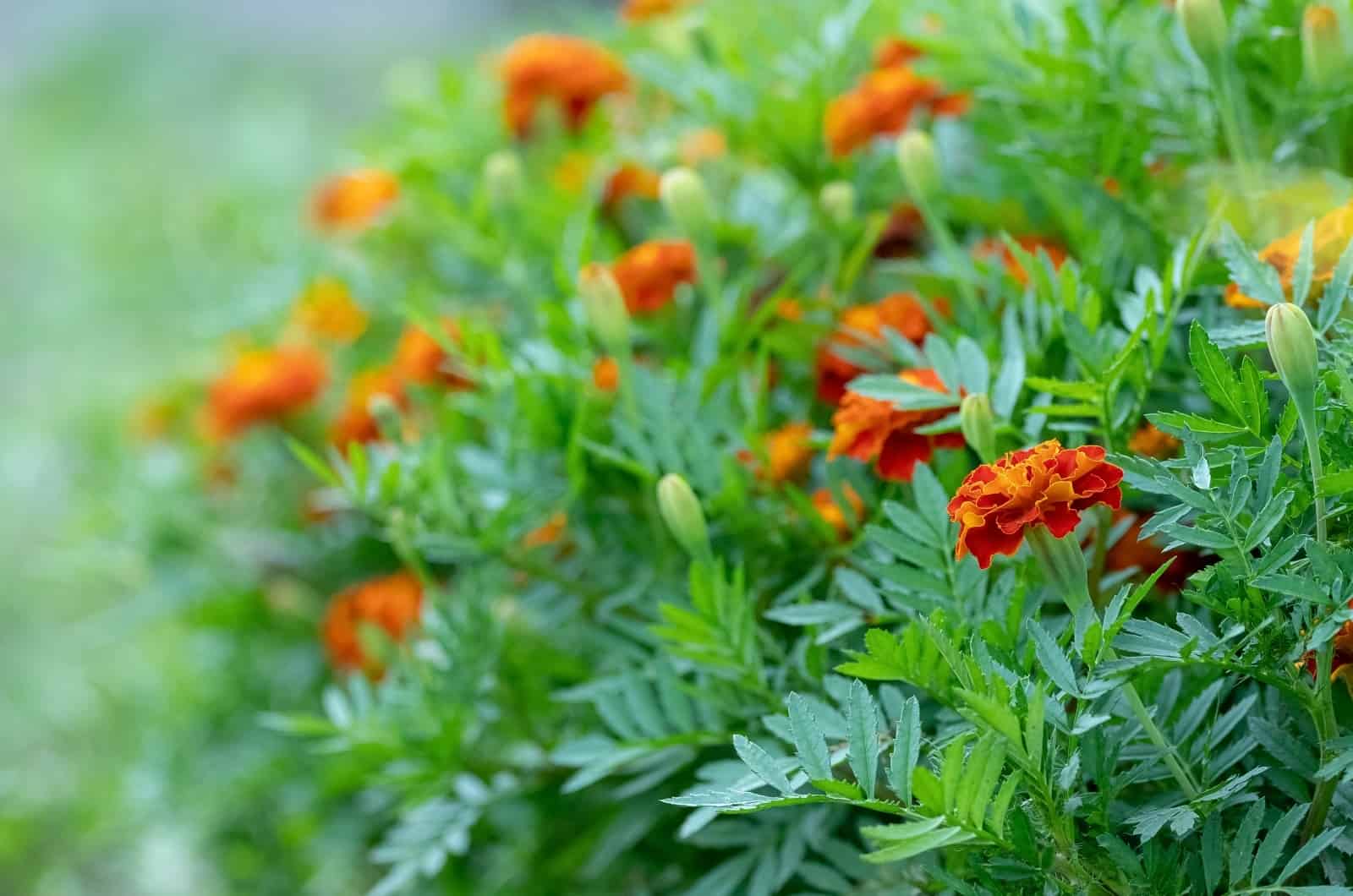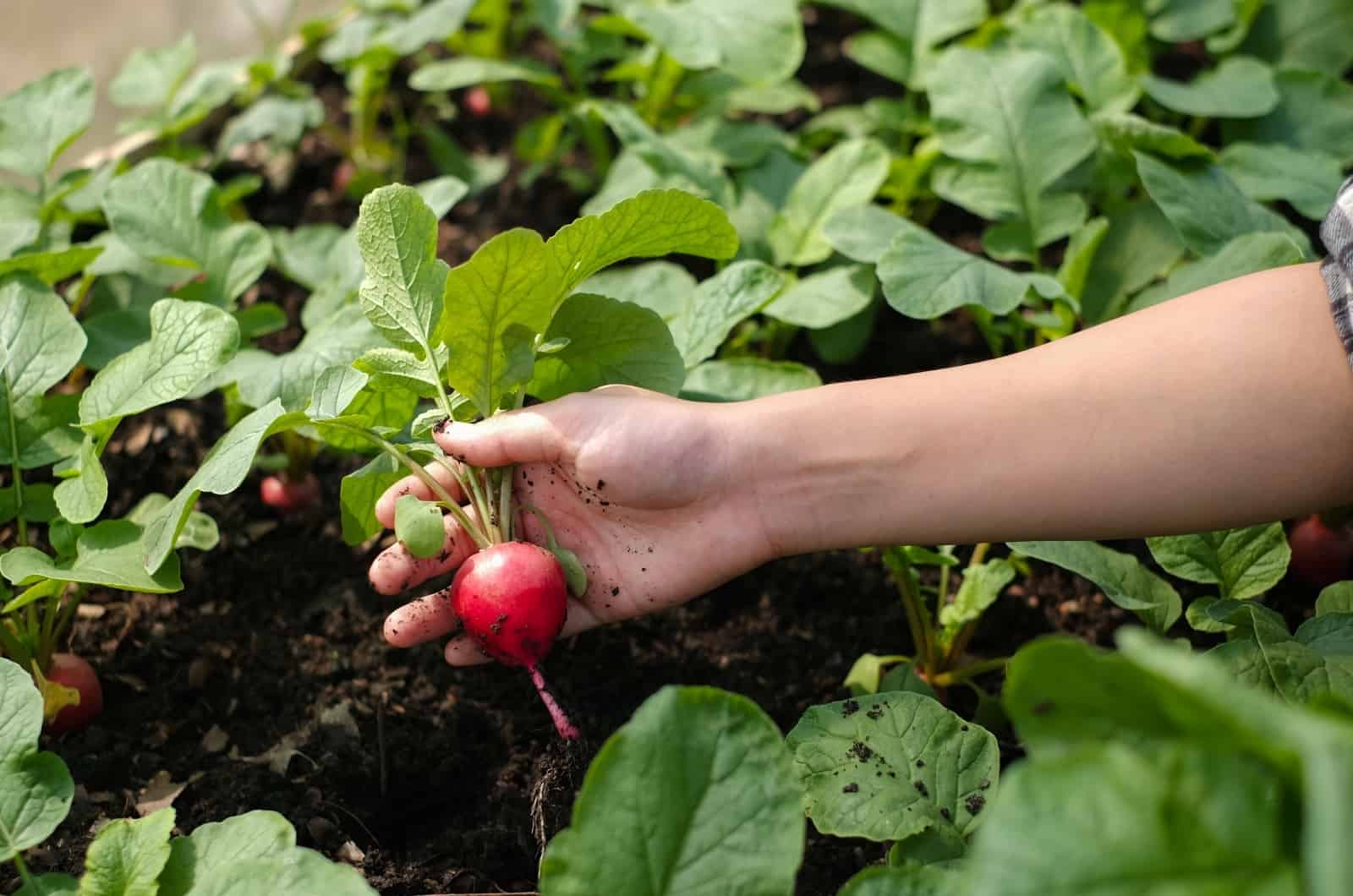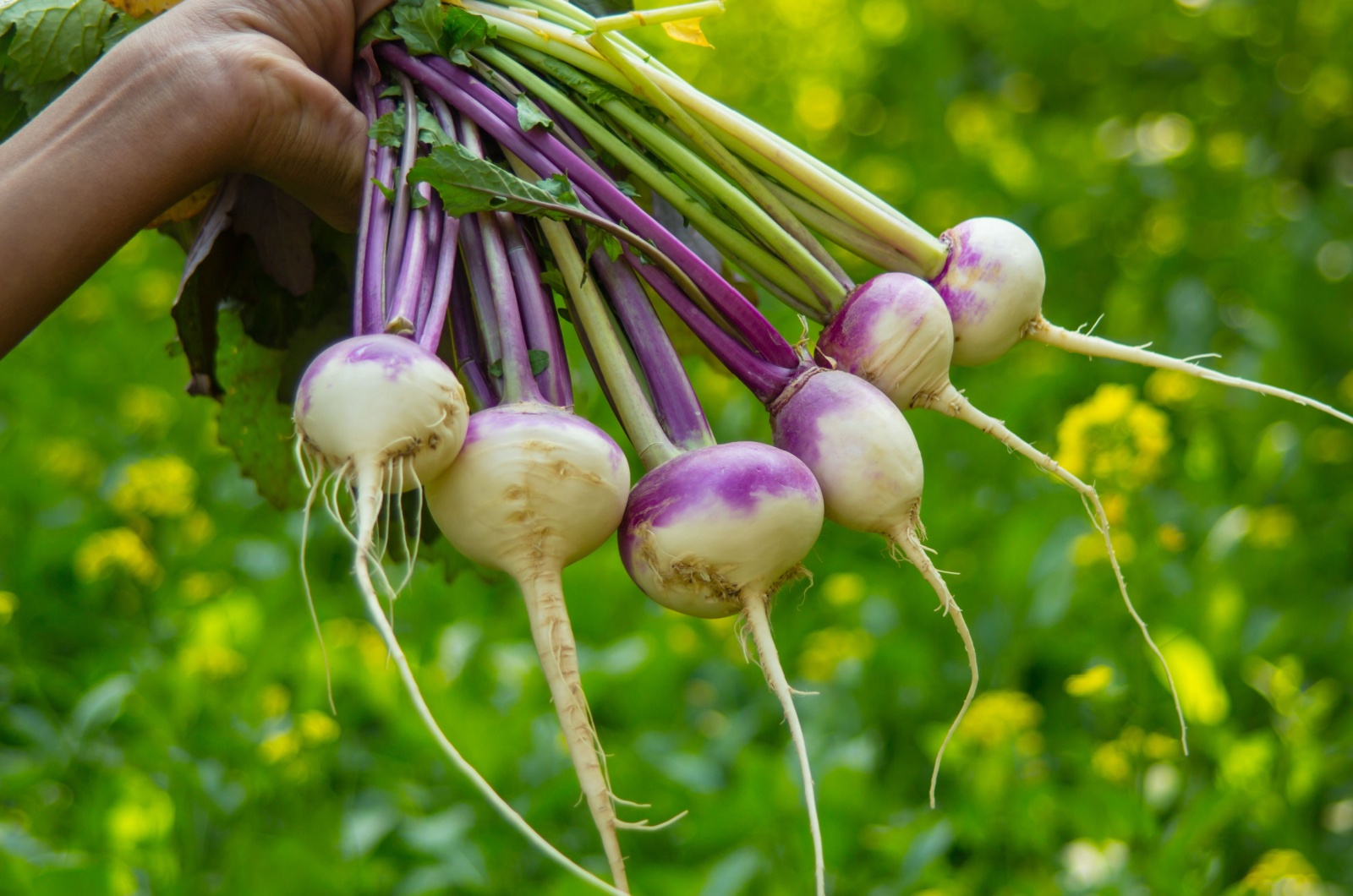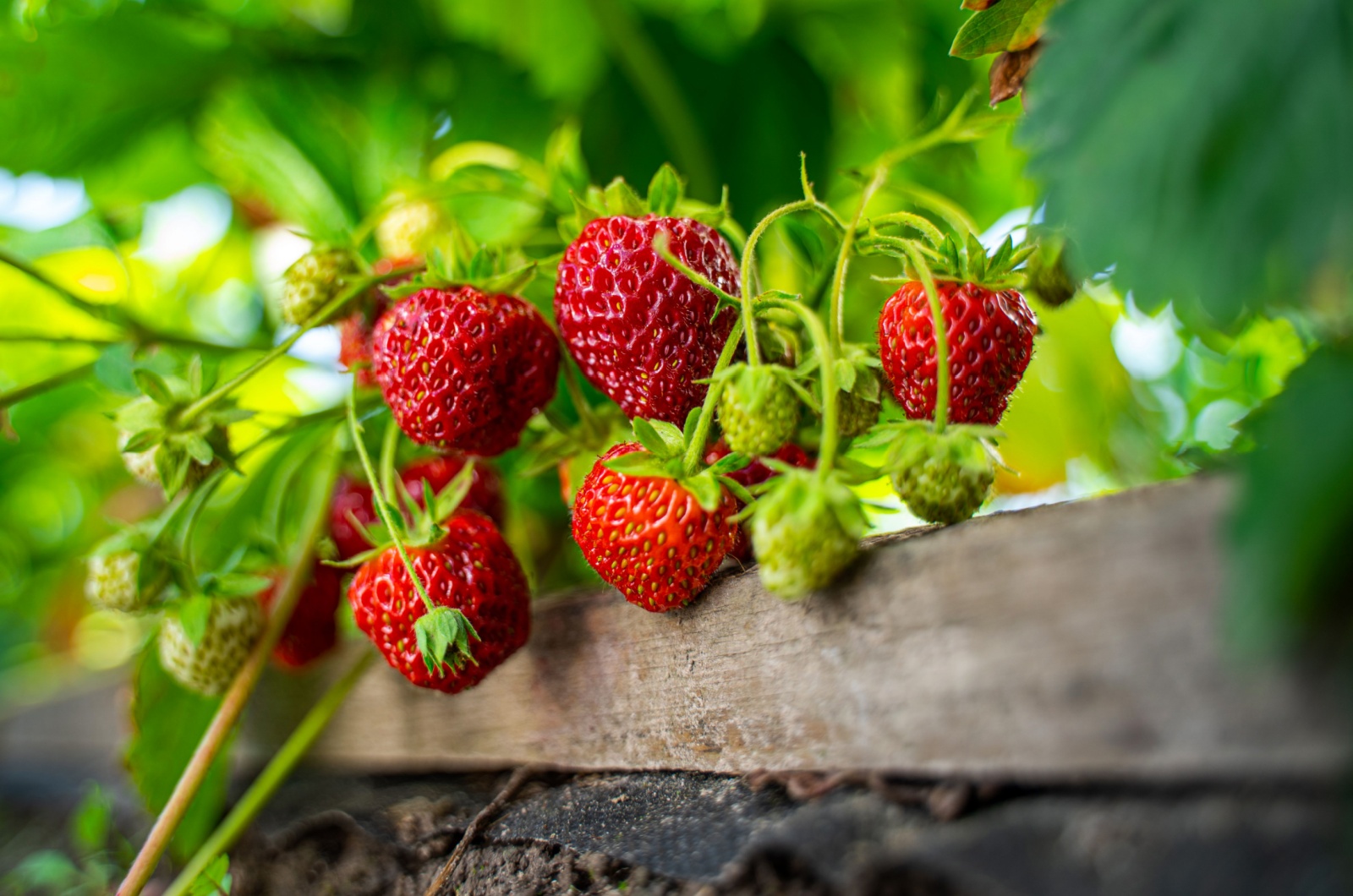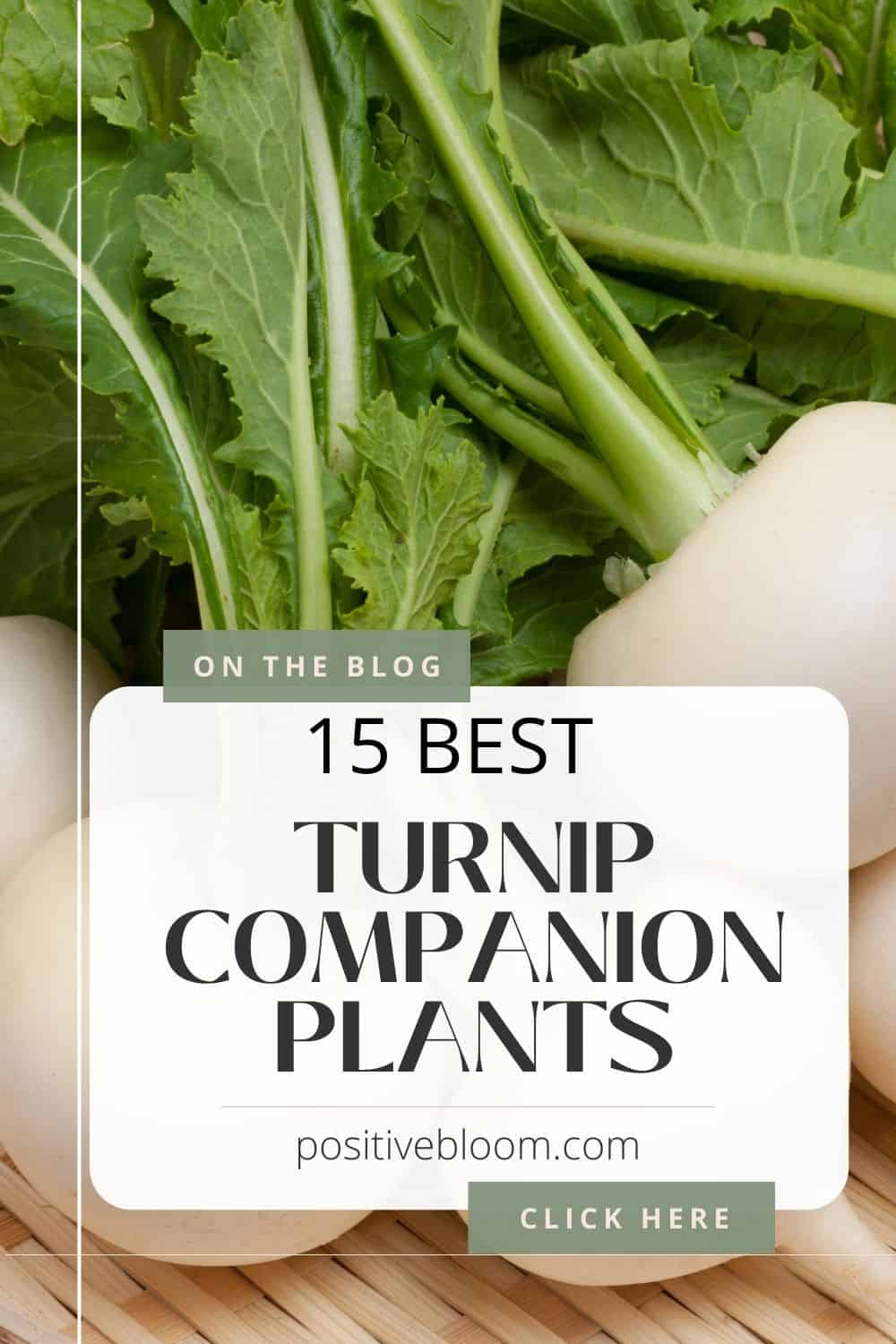Turnips in salads, roasted with honey, or as a side dish to chicken are a real treat, but just imagine how much better they would taste if you grew them yourself!
And would you believe us if we told you there’s a way to reduce the gardening chores and improve the flavor of this veggie?
Because there is, and it’s known as companion planting!
There are many great turnip companion plants, such as vegetables from the cabbage family, aromatic herbs, and flowers like marigolds and nasturtiums.
Of course, there are also certain plants you should avoid growing near this veg, such as root vegetables.
But once you learn all the benefits of companion planting, you will be able to find new veggies and herbs to grow together (and, yes, we’ll discuss this as well).
Now, let’s get started!
1. Basil
Basil is a fantastic herb because it repels pests such as thrips, flies, and even mosquitoes, so don’t forget to plant it near your turnips.
Its delicate flowers can also invite many beneficial insects and pollinators into your garden. It can also improve the flavor of its companions, so don’t miss out.
And if you want to grow other vegetables with this herb besides turnips, you can always check out this list of the best companion plants for basil.
2. Beans
Bush and pole beans are good companion plants to turnips because they take part in nitrogen-fixing and enrich the soil with this nutrient.
Another great thing about these plants is that they won’t compete for space because turnips develop under the ground, whereas beans shoot out above the surface.
3. Borage
Cabbage worms and other brassica pests feed on the turnip greens and prevent them from developing properly.
Thankfully, borage can repel certain insects and attract others, such as parasitic wasps, which will deal with the problem of harmful insects and make the use of pesticides redundant.
4. Brassicas
Turnips belong to the Brassica family, just like cabbage, broccoli, cauliflower, Brussels sprouts, etc. They are all great companion plants because they have similar growing conditions and don’t disturb the development of others.
Also, turnips act as a trap crop and attract aphids, snails and slugs, cabbage worms, and other pests that eat the plants from the cabbage family.
However, they are at risk of cross-pollination, and even though it’s going to increase your yield, your turnip seeds won’t be pure.
5. Catnip (Catmint)
Catnip is a great herb to add to your vegetable garden because it has a pungent smell that can deter aphids and flea beetles.
It can also attract earthworms to your turnip patch and make the soil more fertile, resulting in a larger yield.
Thankfully, catnip is usually not invasive (not like mint, at least), so you don’t have to be careful when planting it. But if you do worry about this issue, you can always grow it in a container, place it near your turnip crop, and enjoy its benefits.
6. Chives
Chives repel Japanese beetles, aphids, spider mites, and even rabbits, so it can keep your turnip roots and tubers safe from these pests.
This beneficial plant can even enhance the taste of this cool-weather crop and increase its growth rate, which is why it is an essential herb in many gardens.
7. Hairy Vetch (Legumes)
An aphid infestation is a big problem for turnip leaves, but planting hairy vetch can help control it. This legume is also a nitrogen-fixing plant, which can enrich the soil with this mineral and prevent its deficiency.
This cover crop can inhibit weed growth and attract pollinators, which will pollinate the flowers and lead to the production of turnip seeds.
8. Hyssop
Hyssop is another fragrant herb which repels pests, one of them being the cabbage moth. But that’s not its only function.
Hyssop produces beautiful flowers that attract all sorts of beneficial insects; some that pollinate your plants, and others that reduce infestations.
9. Nasturtiums
Nasturtiums are one of the finest companion plants you can grow in your vegetable garden. They act as a trap crop and prevent aphid infestations from interfering with turnip growth.
Another thing that growers love about this flowering plant is that it attracts hoverflies and ladybugs, which feed on smaller pests such as whiteflies, aphids, scales, etc.
Nasturtiums can also act as live mulch, preventing weed growth and keeping the white flesh of turnip tubers safe from drying out.
Also, there are many other companion plants for nasturtiums aside from turnips, so you can interplant them all over your vegetable garden.
10. Marigolds
Marigolds are another all-time favorite companion of turnips (and many other vegetables) because they exude a toxic substance that repels root-knot nematodes.
They can also repel Japanese and flea beetles, aphids, and rabbits, which will protect the green leaves of your tuberous vegetable.
Marigolds attract ladybugs and parasitoid wasps, which effectively deal with pest infestations, keeping your turnip crop safe.
11. Peas
Like beans, peas are nitrogen-fixing plants that supplement this mineral and keep your turnips healthy throughout the season.
And the good news is that they won’t fight over space; peas will grow up on a trellis, while turnips enjoy the cool space below.
12. Oregano
When we look at the herb companion plant chart, we see that oregano is a great companion plant because it deters aphids.
And once it flowers, it will attract pollinators that will ensure you have turnip seeds for the next season without having to buy them.
13. Radishes
As a general rule, turnips cannot grow around other root vegetables, but radishes grow so fast that they won’t interfere with growth. (Of course, it would help if you spaced them a bit!)
Radishes can also deter aphids, cucumber beetles, squash bugs, and similar pests, keeping your turnips safe. You can also use turnips as a trap crop to protect your radishes. It’s up to you!
14. Rosemary
Rosemary is another fragrant herb that can keep cabbage moths and aphids away from your turnips.
However, this is a drought-loving plant, so you shouldn’t grow it in the same medium as turnips, or else you risk the white flesh becoming bitter due to a lack of moisture.
But you can grow rosemary in a planter and place it near your turnips to benefit from its pest-repelling abilities.
15. Sage
Sage is an excellent companion to turnips because it also repels cabbage moths and aphids, just like rosemary. In fact, you can combine the two herbs to double these abilities.
Many growers also believe that sage improves the flavor of its growing buddies, so it’s worth planting them together.
This herb also thrives in drier soils, but you can always grow it in a separate container and place it near your turnip patch.
And if you want a fragrant vegetable garden, there are many more sage companion plants you can try growing.
Not The Best Companion Plants For Turnips
Turnip is a good companion plant because you can use it as a trap crop to save your other plants from pest infestations, or you can grow it with various herbs and keep it safe.
However, there are certain plants that you shouldn’t plant in your turnip patch, and they include root vegetables such as alliums, beets, parsnip, etc., nightshades, knotweed, and hedge mustard.
These plants stunt each other’s growth, fight for space, and even attract pests which can kill the other species.
Let’s find out more!
Hedge Mustard
Growing turnips and hedge mustard together is a terrible idea because the former will attract cabbage whiteflies, a pest that will decimate your turnip crop.
These pests aren’t usually a serious issue, but they can stunt the growth of turnips!
Knotweed
Planting turnips near knotweed will cause stunted growth, damage its roots, and disturb the soil around it, so you should avoid growing these plants together.
Nightshades
Nightshades such as peppers and tomatoes are terrible turnip companions because the turnips will inhibit their growth.
Instead, opt for basil, marigold, chives, and similar plants to use as nightshade companions.
Root Vegetables (Parsnip, Beets, Horseradish)
Growing turnips with other root vegetables such as beets, onions and garlic (and similar alliums), horseradish, parsnip, and carrots will make these veggies fight for space, and one of them will always get stunted.
Instead, find other suitable companion plants for carrots or alliums, and grow your turnips with fragrant herbs, beans, peas, etc.
Benefits Of Companion Planting Turnips
Pest control – Many fragrant herbs such as basil, rosemary, oregano, and sage repel harmful insects simply with their smell. Turnips, on the other hand, act as a trap crop, and bugs attack it instead of your other veggies.
Attracting beneficial insects – Flowering plants like nasturtiums, marigolds, and most herbs attract pollinators which ensure high yield, and natural predators such as ladybugs, parasitic wasps, and hoverflies to prey on garden pests.
Enhancing taste and speed of growth – Many herbs can improve the flavor of their companions and even increase their growth rate, so interplant some sage, basil, and chamomile in your vegetable garden.
Providing ground cover – Many short plants such as marjoram, thyme, mint, and basil provide ground cover to your veggies and keep the soil moist for longer.
Providing shade – And while ground cover plants decrease evaporation, taller plants such as tomatoes, peppers, peas, and beans give these varieties some shade and prevent them from getting sunburned.
Supplementing nitrogen – Legumes, bush and pole beans, and peas are excellent nitrogen-fixing plants that take this element from the air and transform the bacteria that reside at their roots into a form that plants can use.
FAQ
You shouldn’t grow turnips and strawberries together because they would fight for essential nutrients in the soil, and the strawberry fruit would be less juicy.
The best time to plant turnips is approximately 2-3 weeks before the last frost date in spring if you want to harvest it in late spring or late summer if you want to have a fall harvest.
And if you want to pick these veggies in late fall, plant them in late September or early October.
Finally, turnips are biennial plants, so you can overwinter them, so they produce sweeter tubers.
Final Thoughts
The best turnip companion plants include aromatic herbs such as basil, rosemary, sage, hyssop, etc., vegetables from the cabbage family, chives, marigolds, nasturtium, and legumes.
All these plants either benefit from the turnip’s sacrifice, which keeps them safe from pests, or they repel insects themselves due to their fragrance or compounds they exude.
There are also plants you should avoid planting near turnips, such as nightshades, root vegetables, hedge mustard, and knotweed. These species stunt each other’s growth and fight for space, resulting in poor yield.
The benefits of companion planting are myriad, and it would be a shame to miss out on them.
Enjoy growing your plants and veggies, and until next time!
Like this post? Share or pin it for later!

